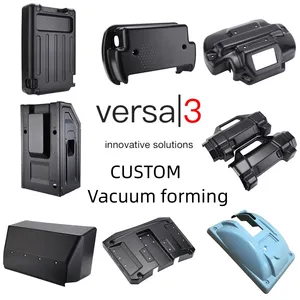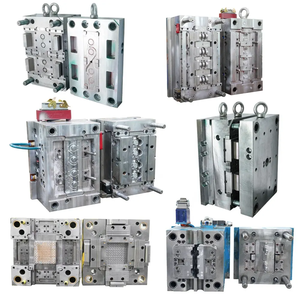Introduction to Thermoforming Molds
Thermoforming molds are essential tools in the manufacturing process, specifically designed for creating precise plastic components through shaping heated plastic sheets. Known for their versatility and efficiency, these molds are widely used across various industries, including automotive, packaging, and consumer goods. By utilizing thermoforming molds, manufacturers can achieve intricate designs and functional parts with minimal waste, making them a sustainable option for modern production processes.
Types of Thermoforming Molds
When it comes to thermoforming molds, understanding the different types available can help you choose the right mold for your specific application. Here are several common types:
- Single-Sided Molds: These molds feature a cavity on one side, ideal for shallow shapes and parts with minimal undercuts.
- Double-Sided Molds: Designed with cavities on both sides, double-sided molds are beneficial for producing more complex and deeper shapes.
- Male Molds: These molds have protruding shapes and are typically used when the formed plastic needs to be pulled over the mold.
- Female Molds: Featuring recessed shapes, female molds are perfect for when the plastic sheet is pressed into the cavity.
- Custom Molds: Tailored molds designed based on specific customer requirements, offering unique solutions for niche applications.
Applications of Thermoforming Molds
Thermoforming molds are utilized in a variety of sectors, highlighting their adaptability and efficiency in production. Here are some notable applications:
- Packaging Industry: Thermoforming molds are often used to create packaging trays, clamshells, and blisters for various products, ensuring both protection and aesthetic appeal.
- Automotive Components: These molds are crucial in producing interior and exterior car parts such as dashboards, panels, and trims, enhancing vehicle design and functionality.
- Medical Devices: The healthcare sector relies on thermoforming molds to create sterile, disposable packaging for medical tools and devices, ensuring safety compliance.
- Consumer Products: From storage containers to kitchenware, thermoforming molds help create a wide range of everyday products, combining convenience with style.
Advantages of Using Thermoforming Molds
Incorporating thermoforming molds in production processes offers numerous advantages that can significantly enhance operational efficiency and product quality:
- Cost-Effective Production: Thermoforming molds reduce material waste and energy consumption, leading to lower production costs compared to other molding techniques.
- Quick Turnaround Times: Thermoforming allows for rapid prototyping and faster production speeds, making it an ideal choice for businesses requiring quick market entry.
- Diverse Material Compatibility: These molds can work with various thermoplastics, offering flexibility in product design and material choice.
- Precision and Quality: Thermoforming molds ensure high accuracy in part dimensions, resulting in consistent quality and reduced need for post-processing.
- Environmentally Friendly Options: With advancements in plastic recycling, thermoforming uses can incorporate recycled materials, contributing to sustainable manufacturing.








































